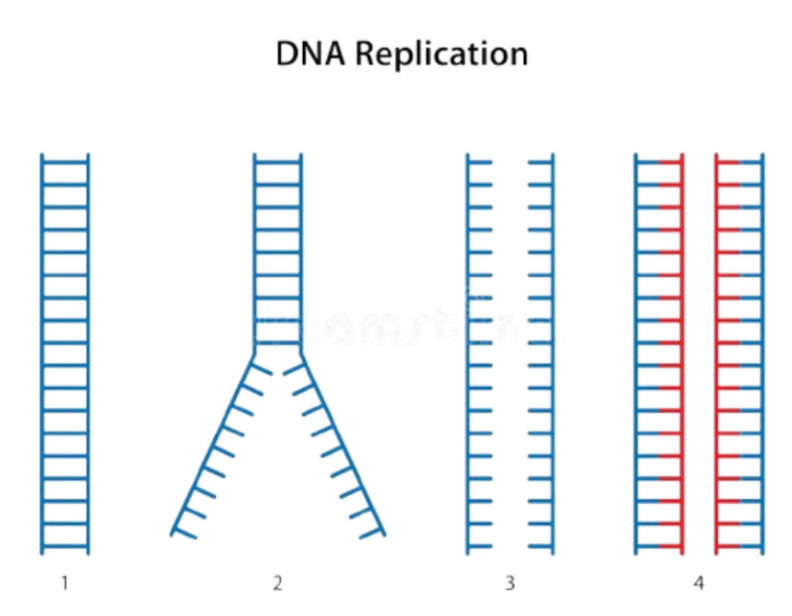From Viruses to Crime Scenes: How PCR Reveals the Invisible
- Anoushka Anand
- 2 days ago
- 3 min read
Just like detectives use clues to solve crimes, doctors use Polymerase Chain Reaction (PCR) to find viruses within the body before symptoms even show up. This molecular detective, life changing in some cases, deserves to be recognised not just by those studying biological related sciences, or doctors, but by everyone. It can help solve crimes, study gene expression and monitor populations in the environment.
How does PCR work?
PCR is a technique used to make millions of copies of DNA segments through the usage of a thermocycler. A thermocycler is essentially a photocopier machine: it allows scientists to take tiny samples of essentially invisible DNA and make enough copies to study the strands in detail.

The thermocycler makes several copies of a single segment of DNA/RNA through around 30-40 cycles in varying temperatures, and is separated into steps:
Denaturation: occurs at 95°C
Annealing: occurs from usually at 56°C (can vary depending on DNA segment and amount of amplified strands required)
Extension: occurs at 72°C
Before one can use the thermocycle, a sample must be prepared. This sample must contain 2 main components. One mixture of components includes the extracted DNA sample itself, designated primers, and water; the other component mix is a premix of taq polymerase (a specific enzyme for amplification), buffer (controls the pH of the mixture to prevent any breakages in the strand), and the building blocks of DNA (nucleotides of adenine, guanine, thymine and cytosine).
After sample preparation in centrifuge tubes, the 3 steps of DNA amplification in the thermocycler can commence.
Denaturation: After the initial step of simply heating the cycler to warm it up, denaturation occurs to separate the double stranded DNA into single stranded DNA (admin). The heat applied to the strands breaks the hydrogen bonds between the complementary base pairs, leaving each molecule as 2 disconnected strands (admin). This physical separation typically takes 30 seconds, and preps it for the second step.
Annealing: Once separated, the reaction temperature is lowered to suit the environment of primers and allow binding (Nimrat Khehra et al.). Primers are synthetic short stranded DNA that simply allow the commencement of extension. During annealing, primers bind to complementary regions on the target DNA (Nimrat Khehra et al.). The enzyme which synthesizes DNA (polymerase) cannot start on its own, and hence needs a starting point which the primer indicates.
Extension: Finally, once the primers have binded, taq polymerase, a special enzyme synthesises a new strand of DNA by adding the building blocks or nucleotides. This takes around 60 seconds, and often at the end, there is a final extension which provides extra time for unfinished amplification.

How does PCR help detect viruses?
Every virus contains its own unique set of DNA/RNA. When an infected patient’s DNA is extracted, even in extremely small amounts, the presence of this virus can be easily identified through PCR.
To identify presence, scientists must design primers to match the sequence of the virus's DNA. During the 30-40 cycles in the cycler, this DNA gets amplified exponentially, directly correlating with whether the virus is present or not (National Human Genome Research Institute).
Detection methods after this include gel electrophoresis or fluorescent signal emission.
Where has it been used in the real world?
Forensics: The Golden State Killer Case shook California between the years of 1974 to 1986, leaving several cases of unsolved murders, rapes and burglaries that completely baffled investigators (Wickenheiser). It was not until the use of PCR that the case had a breakthrough in 2018. DNA was extracted from evidence from the crime scene (blood, hair, semen) and amplified to build a DNA profile. After tracing ancestry, the offender Joseph James DeAngelo, was finally found and arrested (Wickenheiser).
Agriculture: To manage and treat pests, biotechnologists are working on methods to identify genes in order to limit and prevent the spread of pests in order to maximise yield of crops. To identify genes, PCR is used.
References
admin. “Three Steps of PCR Cycle – Denaturation, Annealing, and Extension - CSIR NET LIFE SCIENCE COACHING | NTA NET LIFE SCIENCE | CSIR LIFE SCIENCE.” CSIR NET LIFE SCIENCE COACHING | NTA NET LIFE SCIENCE | CSIR LIFE SCIENCE, 16 Mar. 2025, www.letstalkacademy.com/three-steps-of-pcr-cycle-denaturation-annealing-extension/. Accessed 27 Sept. 2025.
National Human Genome Research Institute . “Understanding COVID-19 PCR Testing.” Genome.gov, 2022, www.genome.gov/about-genomics/fact-sheets/Understanding-COVID-19-PCR-Testing. Accessed 27 Sept. 2025.
Nimrat Khehra, et al. “Polymerase Chain Reaction (PCR).” Nih.gov, StatPearls Publishing, 7 July 2025, www.ncbi.nlm.nih.gov/books/NBK589663/. Accessed 27 Sept. 2025.
Stepura , Anatol . “DNA Replication ,” Dreams Time, www.dreamstime.com/dna-deoxyribonucleic-acid-replication-parental-breakage-hydrogen-bonds-strands-two-separated-daughter-image332261257. Accessed 27 Sept. 2025.
“Thermal Cyclers | Thermo Fisher Scientific.” Thermofisher.com, 2016, www.thermofisher.com/search/browse/category/us/en/90217014. Accessed 27 Sept. 2025.
Wickenheiser, Ray A. “Forensic Genealogy, Bioethics and the Golden State Killer Case.” Forensic Science International Synergy, vol. 1, 1 Jan. 2019, pp. 114–125, pmc.ncbi.nlm.nih.gov/articles/PMC7219171/, https://doi.org/10.1016/j.fsisyn.2019.07.003. Accessed 27 Sept. 2025.
.png)





Comments